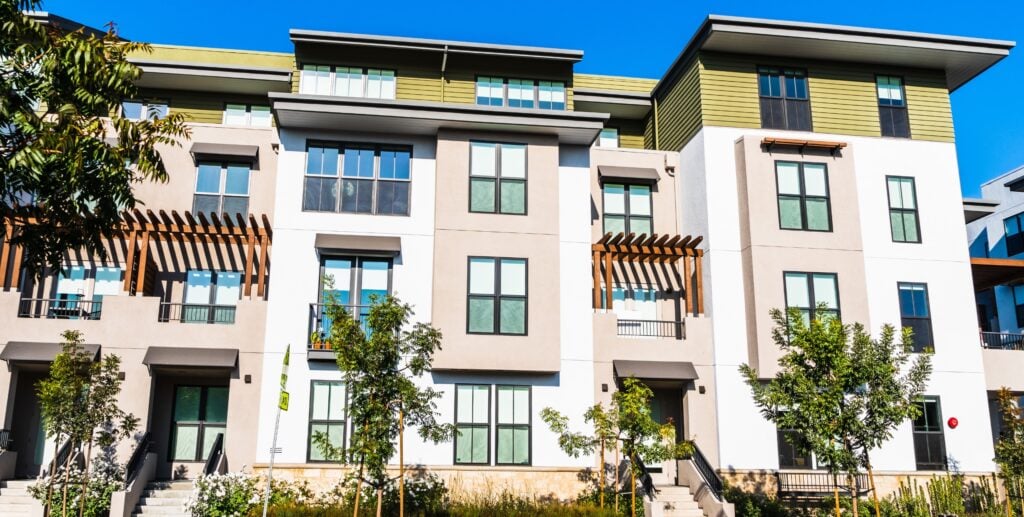In This Article
This article is presented by Steadily.
Did you know the cost to insure the exact same rental property can vary by more than 40%, just by crossing state lines? While you’re crunching cap rates and analyzing rent rolls, insurance can be a hidden expense quietly eating into your returns, and most investors don’t realize it until it’s too late.
Landlord insurance isn’t just another line item on your P&L. It’s a fixed cost that directly impacts your cash flow month after month, year after year.
Yet when evaluating potential markets, most real estate investors focus on purchase prices, rental income, and maybe property taxes. Insurance gets treated as an afterthought.
That’s an expensive mistake. The difference between a high-insurance state and a low-insurance state can mean thousands of dollars annually. Over a 10-year hold period, you could be looking at $20,000 or more in additional costs—money that could have gone toward your next down payment.
So we dug into the data. We analyzed median landlord insurance premiums and rates per $1,000 of insured value across the United States.
And what we found might change how you think about market selection. These five states offer the perfect combination of affordable insurance and strong rental demand, giving savvy investors a hidden edge in building profitable portfolios.
Why Insurance Costs Matter More Than You Think
Let’s start with some context. The national median for landlord insurance sits at approximately $1,300 per year, with an average rate of $3.32 per $1,000 of total insured value (TIV). But these numbers swing wildly depending on your ZIP code.
Think about what this means for your investment strategy. You’ve found two identical duplexes, both generating $2,500 per month in rental income. One’s in a high-insurance state, where you’ll pay $2,000 annually. The others are in Nevada, where you’ll pay $800. That’s a $1,200 difference every single year, or $100 per month straight off your cash flow.
Now multiply that across a portfolio. If you own 10 properties, that seemingly small difference becomes $12,000 annually. Small differences get amplified over time as your portfolio grows.
But raw premium costs only tell half the story. The rate per $1,000 TIV reveals the actual value you’re getting for your insurance dollar. A lower rate means you’re paying less to insure each thousand dollars of property value, which becomes especially important as you scale into higher-value properties or markets.
Understanding these metrics isn’t just about saving money. It’s about making smarter investment decisions from day one. When you factor insurance costs into your initial market analysis, you can identify opportunities other investors miss and avoid markets where hidden costs will erode your returns.
The Five Most Affordable States for Landlord Insurance
1. Nevada
State median premium: ~$800
Rate per $1,000 TIV: $1.89
Nevada absolutely dominates when it comes to affordable landlord insurance. With premiums running nearly 40% below the national average, this state offers investors an immediate competitive advantage.
But it’s not just about cheap insurance. Nevada combines low costs with strong rental demand, no state income tax, and landlord-friendly regulations.
Las Vegas leads the charge with a median premium of just $805 and a rate of $1.93 per $1,000 TIV. The city’s tourism-driven economy creates consistent demand for both long-term and short-term rentals.
Even with its current legal challenges, Las Vegas sees over 40 million visitors annually, allowing the short-term rental market to thrive, while steady population growth fuels traditional rental demand. The relatively stable weather patterns and lower natural disaster risk contribute to these attractive insurance rates.
You might also like
Reno follows closely, at a $893 median premium and $2.10 per $1,000 TIV. Often called “the biggest little city,” Reno has transformed from a gaming destination to a legitimate tech hub. Major companies like Tesla, Apple, and Google have established operations here, driving population growth and rental demand. The slightly higher insurance costs compared to Las Vegas are offset by strong appreciation potential and growing tenant pools from Bay Area relocations.
2. Utah
State median premium: ~$875
Rate per $1,000 TIV: $1.89
Utah ties with Nevada for the lowest rate per $1,000 TIV in our analysis, making it incredibly efficient from an insurance perspective. The state’s diverse economy, ranging from tech in Salt Lake City to tourism in the southern regions, creates multiple investment strategies for savvy landlords.
St. George emerges as a hidden gem with the lowest city premium in our entire analysis at just $700 and an impressive $1.60 per $1,000 TIV. This southwestern Utah city benefits from year-round mild weather, proximity to multiple national parks, and an influx of retirees. The combination of low insurance costs and steady demand from both tourists and permanent residents makes it particularly attractive for buy-and-hold investors.
Moab takes it even further with a median premium of $650 and the lowest rate at $1.50 per $1,000 TIV. Yes, you read that correctly. Despite being a world-renowned outdoor recreation destination, Moab’s insurance costs remain remarkably low.
The city’s unique position as a gateway to Arches and Canyonlands national parks creates exceptional short-term rental opportunities. With proper management, investors can capitalize on peak tourist seasons while maintaining some of the lowest insurance overhead in the nation.
3. Idaho
State median premium: ~$880
Rate per $1,000 TIV: $2.02
Idaho has quietly become one of the hottest real estate markets in the country, and the insurance costs haven’t caught up to the growth. This creates a unique window of opportunity for investors who move quickly. The state’s combination of quality of life, business-friendly environment, and relative affordability continues to attract both residents and companies.
Boise shows a median premium of $915 with a $2.02 per $1,000 TIV rate. While these numbers have crept up slightly with the city’s rapid growth, they remain well below national averages.
Boise’s economy has diversified beyond its agricultural roots, with companies like Micron Technology, Simplot, and numerous tech startups calling it home. The city consistently ranks among the fastest-growing metros in the nation, with population growth averaging 2.5% annually since 2020.
Idaho Falls presents an interesting alternative at a $915 median premium, but with a better rate of $1.87 per $1,000 TIV. This suggests you’re getting more bang for your insurance buck in Idaho Falls compared to Boise.
The city serves as a regional hub for eastern Idaho and benefits from stable employment through the Idaho National Laboratory and a growing healthcare sector. For investors seeking strong cash flow without the competition of Boise’s hot market, Idaho Falls offers compelling economics.
4. Wisconsin
State median premium: ~$1,025
Rate per $1,000 TIV: $2.51
Wisconsin might surprise some investors, but the state offers unique advantages that offset slightly higher insurance rates compared to our top three. The key is knowing where to look and understanding the state’s distinct market dynamics between stable urban rentals and lucrative vacation properties.
Green Bay leads Wisconsin with an $850 median premium and $2.07 per $1,000 TIV. The city offers textbook Midwest stability: steady employment, consistent rental demand, and lower property prices that boost cash-on-cash returns.
The Packers aren’t just a football team here—they’re an economic engine that drives tourism and creates unique short-term rental opportunities during the NFL season. Eight home games can generate premium nightly rates that savvy investors leverage to boost annual returns.
Door County tells a different story at a $1,100 median premium and $2.27 per $1,000 TIV. While insurance costs run higher, this peninsula surrounded by Lake Michigan has become the “Cape Cod of the Midwest.” The summer vacation rental market here is incredibly strong, with properties often booked solid from Memorial Day through Labor Day.
Investors who understand seasonal rental strategies can generate impressive returns despite the higher insurance costs, especially with waterfront properties commanding premium rates.
5. Arizona
State median premium: ~$1,025
Rate per $1,000 TIV: $2.26
Arizona rounds out our top five, offering a compelling mix of population growth, landlord-friendly laws, and insurance costs that still beat the national average by over 20%. The state’s diverse geography creates distinct micro-markets, each with unique investment profiles.
Flagstaff presents better value than expected at a $1,200 median premium and $2.36 per $1,000 TIV. Sitting at 7,000 feet of elevation, Flagstaff offers something rare in Arizona: four seasons. This creates year-round rental demand from Northern Arizona University students, families escaping Phoenix heat, and winter sports enthusiasts. The city’s proximity to the Grand Canyon adds short-term rental potential that many investors overlook.
Sedona shows the highest premiums in our Arizona analysis, at a $1,450 median premium and $2.51 per $1,000 TIV, but don’t let that scare you off. Sedona’s short-term rental market commands some of the highest nightly rates in the Southwest. The city’s stunning red rock landscapes, spiritual tourism, and luxury traveler demographics create a unique investment opportunity. While insurance costs more, the revenue potential often more than compensates for investors who understand the luxury vacation rental market.
Making Smart Insurance Decisions with Steadily
After analyzing all this data, you might be wondering how to actually capitalize on these insurance savings. That’s where having the right insurance partner becomes crucial.
Steadily has emerged as the go-to insurance provider for smart real estate investors. Built specifically for landlords, they understand that every dollar saved on insurance is a dollar added to your cash flow. Unlike traditional insurers who treat rental properties as an afterthought, Steadily specializes exclusively in landlord insurance.
What makes Steadily different? Instant online quotes let you compare coverage options and bind policies in minutes, not days. No phone calls, no waiting for agents.
Their coverage targets the risks landlords actually face: lost rental income, tenant damage, and liability issues that standard policies often exclude.
And they cover both long-term, medium-term, and short-term vacation rentals.
If you’re building a portfolio across state lines, Steadily operates in all 50 states, with consistent underwriting standards—meaning you get to work with one provider instead of juggling multiple agents and policies.
Ready to see how much you could save on landlord insurance? Get your free quote from Steadily today!
























